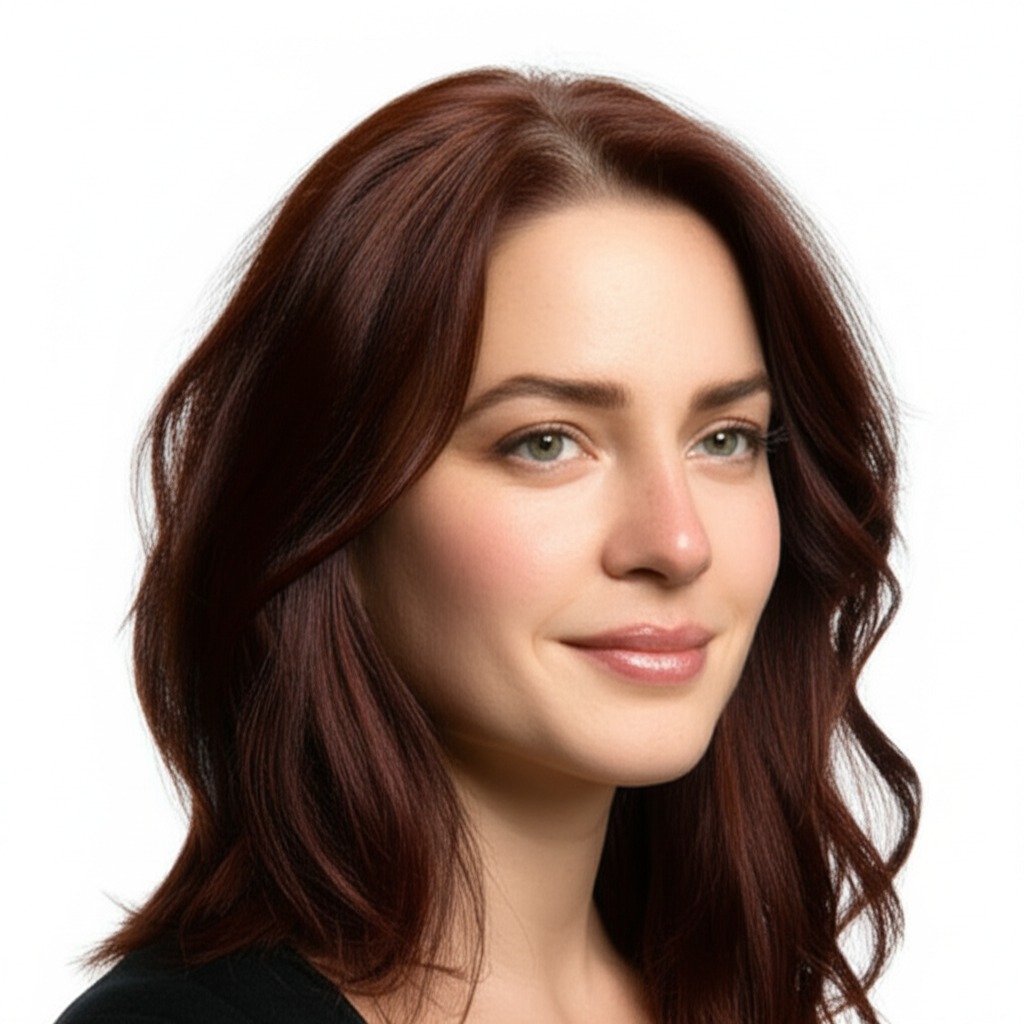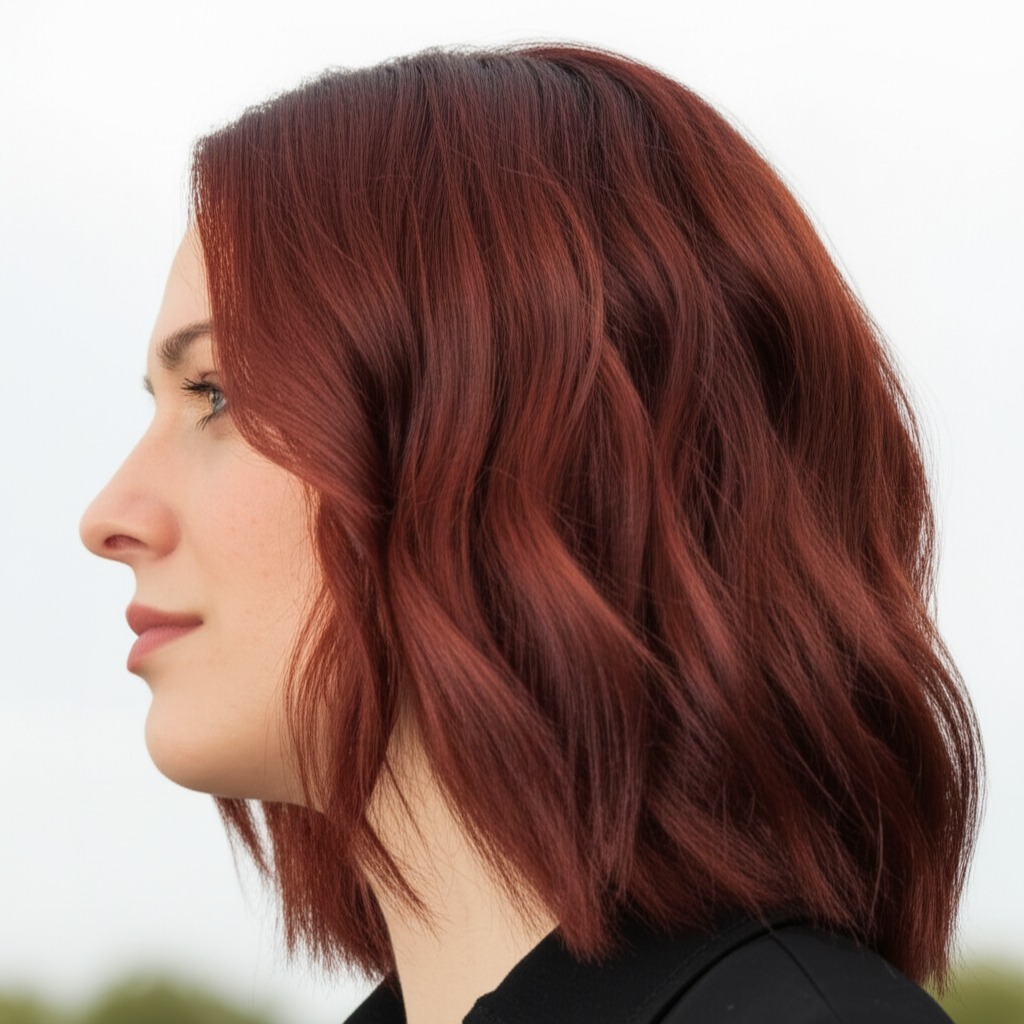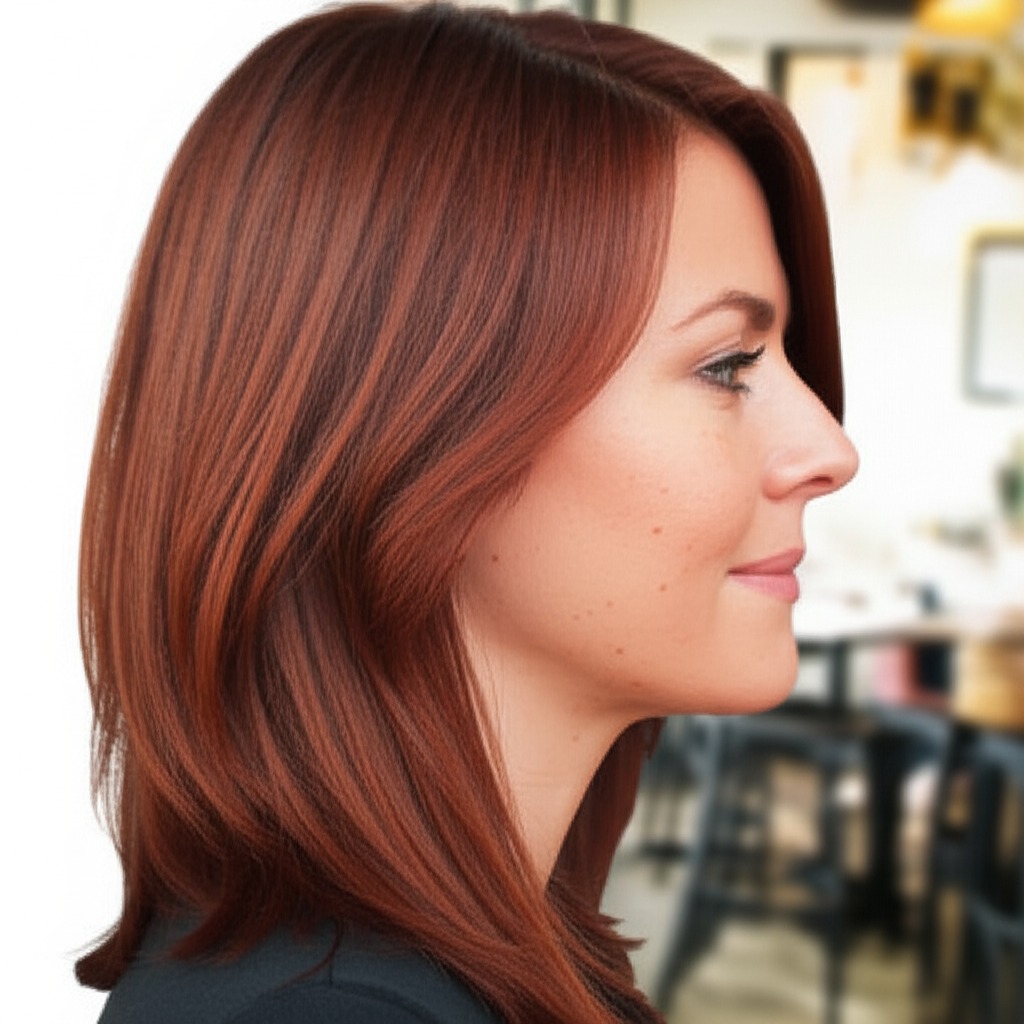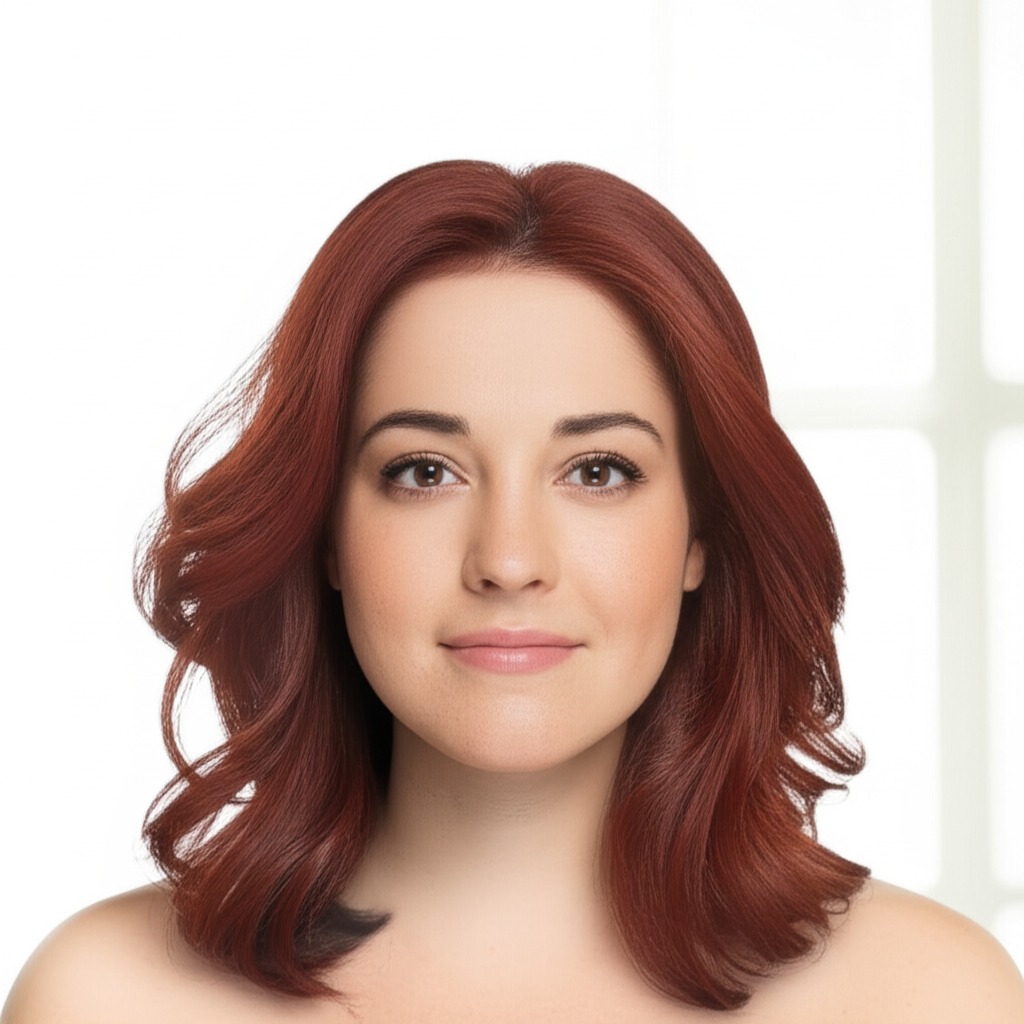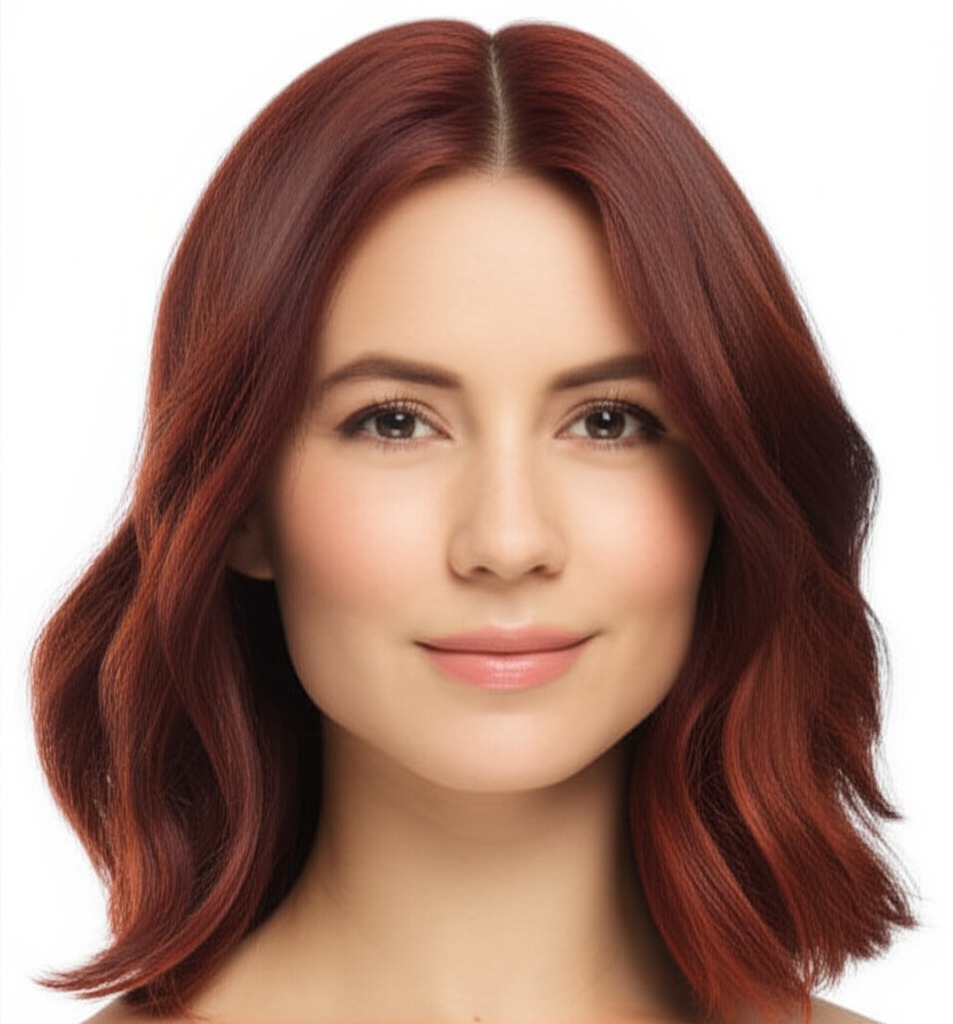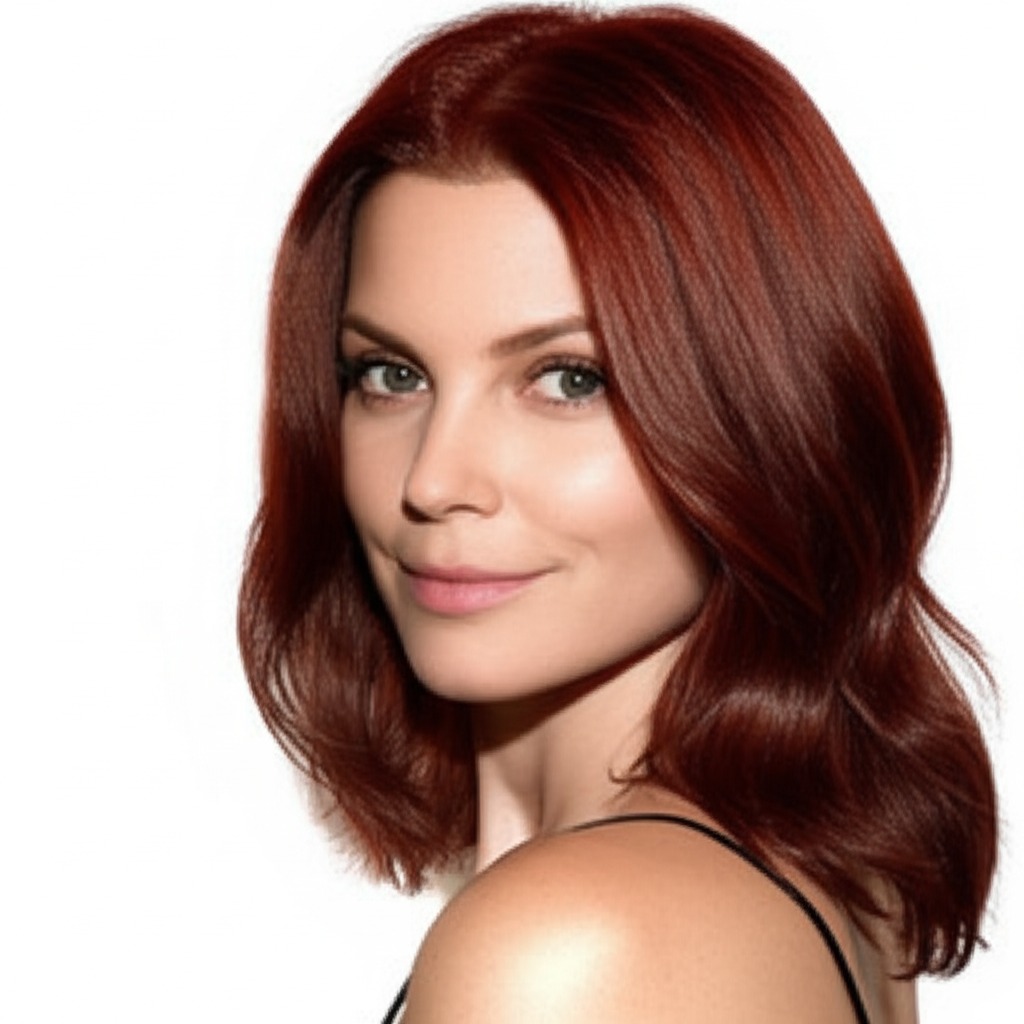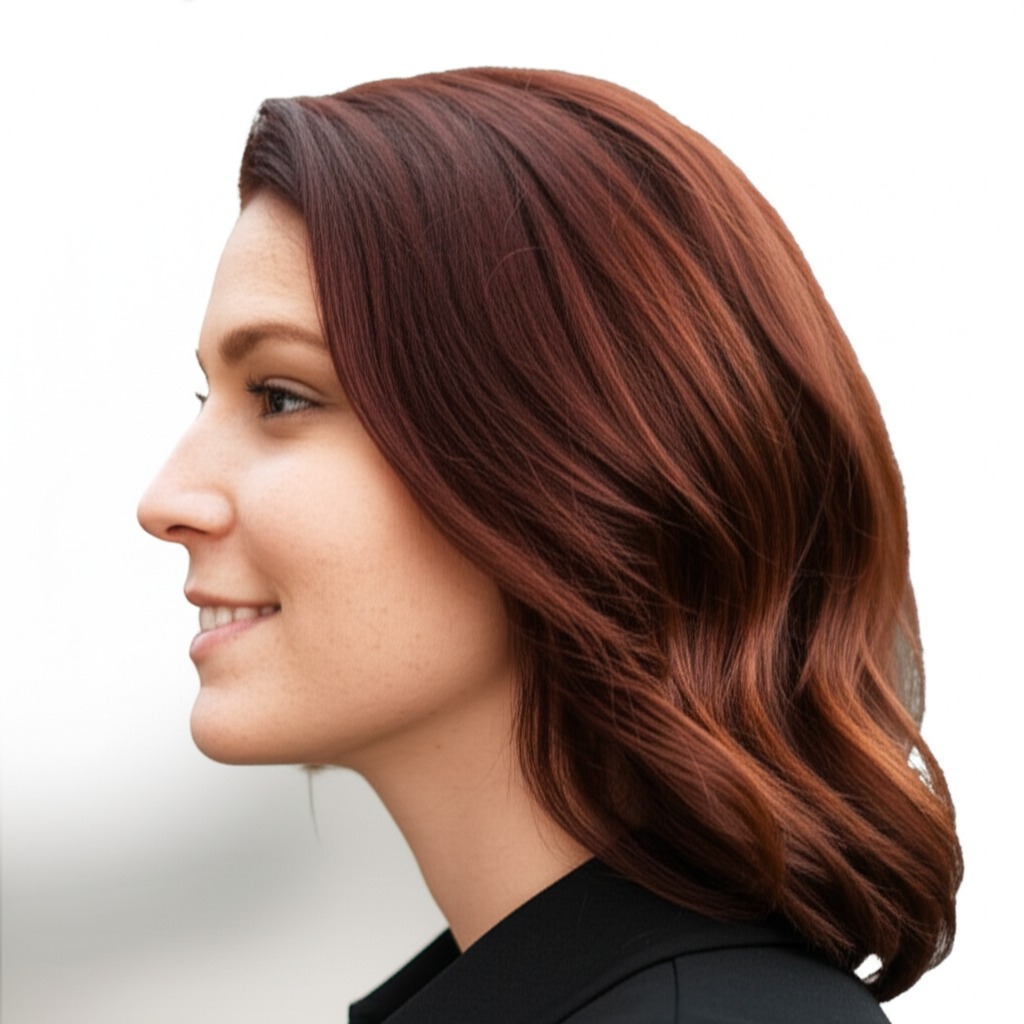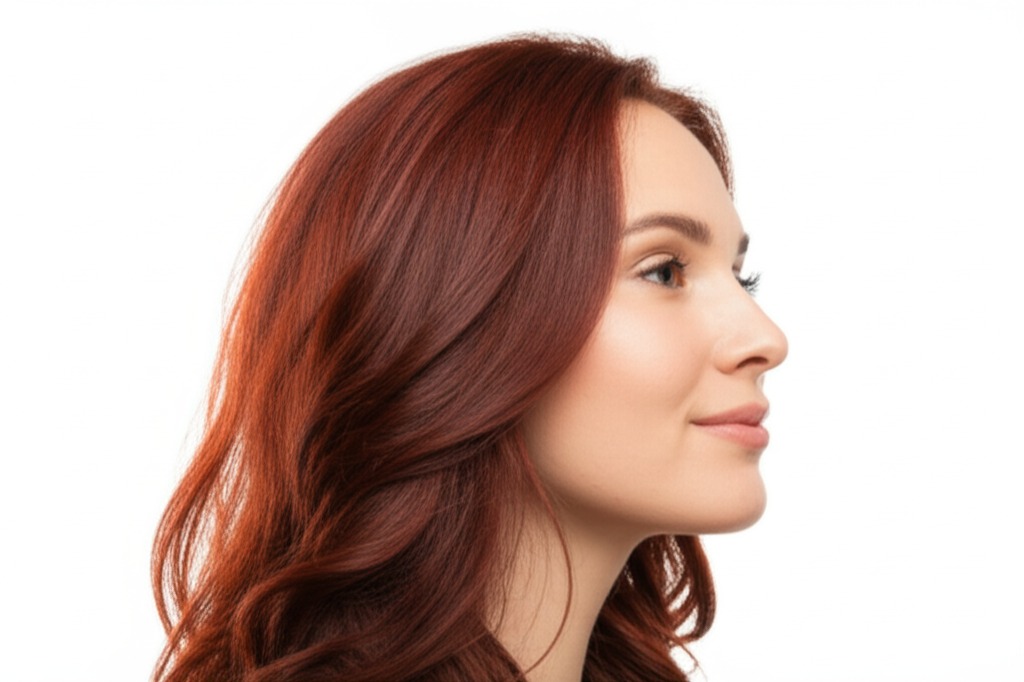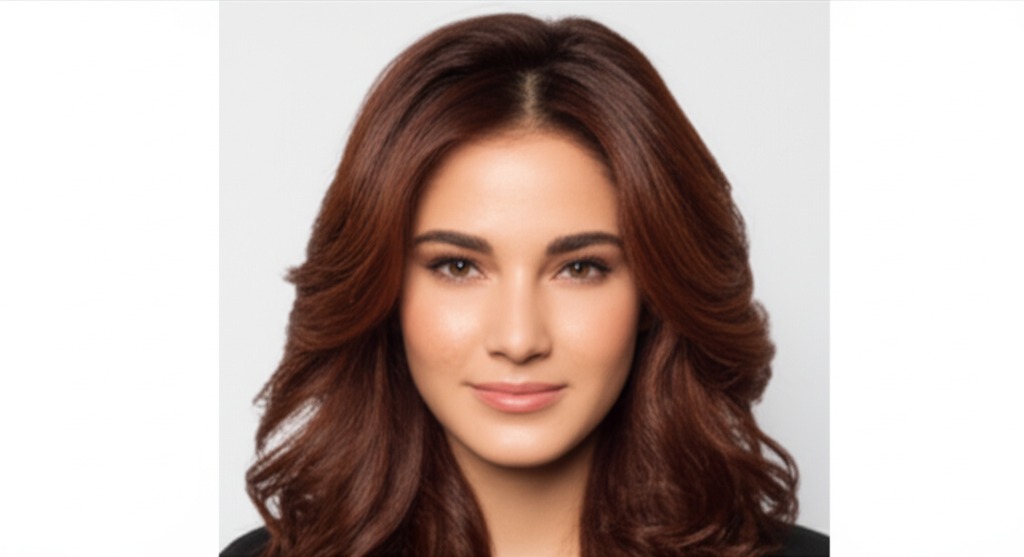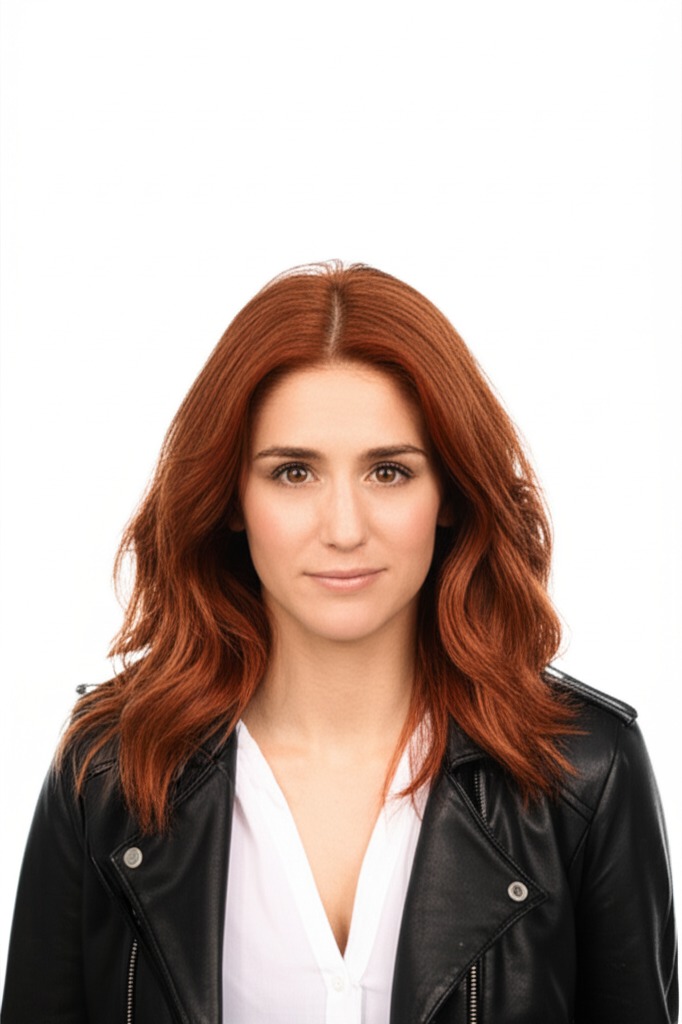#Dive into Deep Auburn Hair Color: A Comprehensive Guide
Deep auburn is a captivating hair color – rich, warm, and full of character. It evokes images of autumn leaves, cozy fireplaces, and classic beauty. But achieving the right deep auburn for you takes more than just picking a box dye. This guide will break down everything you need to know about this stunning shade, from its technical details to how to keep it looking gorgeous.
#1. Understanding Deep Auburn: Shade Definition
Deep auburn isn't just one color; it’s a family of shades! Here's what defines it:
- Undertone: Auburn is fundamentally warm. It leans heavily on red and brown pigments, creating that signature glow. However, the specific warmth can vary – some are more copper-leaning (brighter), while others have a deeper burgundy quality (more muted).
- Depth (Levels): “Deep” refers to its darkness. We're generally talking about levels 3-5 on the hair color scale (1 being black, 10 being platinum blonde). A level 3 deep auburn will be quite dark and rich, while a level 5 will have more visible roots as it grows out. A good stylist can assess your natural base to determine the ideal depth for you.
- Key Descriptors: Think "chestnut," “mahogany,” or "burnt sienna" - these words capture the essence of deep auburn's complexity.
#2. Who Does Deep Auburn Flatter?
Choosing a hair color should be about more than just liking the picture. It’s about finding a shade that complements your natural features!
- Skin Tone & Undertone: Deep auburn shines on people with warm skin tones – those who tan easily and have golden, yellow, or olive undertones. If you're unsure of your undertone, look at the veins in your wrist under natural light: blue/purple usually indicates cool; green suggests warm. While deep auburn is best for warm complexions, individuals with neutral undertones can also pull it off – especially if they have warmer eye colors (see below).
- Eye Colors: Auburn hair looks particularly stunning with hazel, golden brown, amber, and even green eyes. The warmth of the color enhances these natural hues. Brown eyes will appear more luminous and hazel/green eyes will pop!
- Natural Level Starting Points: This is crucial. Deep auburn works best on those starting from levels 2-6 (dark brown to medium brown). Going darker than your natural level isn't always a problem, but it’s important for the colorist to assess hair health and porosity. Lighter bases will require more processing and potentially multiple sessions to achieve the desired depth without damage.
#3. Technique Options: Bringing Deep Auburn to Life
How you apply deep auburn makes a huge difference in the final result!
- Single-Process: This is the simplest approach – applying color all over. It’s great for covering grays or achieving an even, solid shade.
- Highlights/Lowlights: Adding subtle highlights (lighter pieces) can add dimension and brightness. Lowlights (darker pieces) deepen the richness of the auburn.
- Babylights: Very fine, delicate highlights that mimic natural sun-kissed streaks. They create a soft, blended effect.
- Gloss/Toner: A gloss or toner is essential for maintaining vibrancy and correcting tone (more on this later!). It adds shine and helps prevent brassiness.
- Balayage-Effect vs. Solid: Balayage creates a more natural, hand-painted look with softer roots and blended highlights. This is ideal if you want a low-maintenance color that grows out gracefully. A solid application gives an even, consistent hue – perfect for a bolder statement.
#4. Maintenance & Longevity: Keeping Your Color Vibrant
Deep auburn is gorgeous but requires commitment!
- Wash Frequency: Aim to wash your hair only 2-3 times per week to preserve color intensity.
- Toner Refresh: Auburn tones tend to fade, often developing brassy or muddy undertones. A toner refresh every 6-8 weeks (or as recommended by your stylist) is vital.
- Root Growth Pacing: How quickly you need to visit the salon depends on how much of your natural color shows through and whether you opted for a solid or balayage application. Solid applications require more frequent root touch-ups (every 4-6 weeks). Balayage can often go longer between appointments (8-12+ weeks).
- Budget/Time Planning: A single process deep auburn might cost $100-$250 and take 1-2 hours. Highlights or balayage will be more expensive ($200 - $400+) and require 2-4 hours (or longer!). Factor in toner appointments too!
#5. Seasonality & Pairing with Cuts: Style for Every Occasion
- Seasonal Tweaks: Deep auburn looks rich year-round, but consider adjusting the tone slightly. In winter, a deeper, more burgundy shade is cozy and dramatic. For summer, add warmer copper highlights to brighten your complexion.
- Cut Pairings:
- Bob/Lob: A deep auburn bob or lob (long bob) looks chic and modern – especially with face-framing layers.
- Long Layers: Deep auburn in long layers creates movement and dimension, showcasing the color's richness.
- Pixie Cut: While less common, a pixie cut can be incredibly stylish with deep auburn—it requires confidence!
- Occasion Picks: Deep auburn is versatile! It’s suitable for work (especially if kept more muted), daytime events, and evening occasions. For weddings, consider adding subtle highlights to catch the light beautifully.
#6. At-Home Care: Protecting Your Investment
Proper at-home care is crucial for maintaining your deep auburn color!
- Sulfate-Free Shampoo: Sulfates strip away natural oils and fade color quickly. Switch to a sulfate-free shampoo specifically designed for colored hair.
- Clarifying Cadence: While sulfate-free shampoos are gentle, buildup can still occur. Use a clarifying shampoo (specifically formulated for color-treated hair) every 4-6 weeks to remove residue.
- Heat Protection: Always use a heat protectant spray before using any hot styling tools (blow dryer, straightener, curling iron).
- Color-Safe Styling Tips: Avoid harsh chemicals and excessive sun exposure. Rinse your hair with cool water after washing – this helps seal the cuticle and lock in color.
- Product Checklist: Sulfate-free shampoo & conditioner, heat protectant spray, leave-in conditioner (especially for dry or curly hair), color-depositing gloss/mask (optional).
#7. Common Pitfalls: Preventing Color Disasters
- Brassiness: Red pigments are notorious for fading and oxidizing into brassy tones. Regular toning is key!
- Banding: Uneven color application, often due to uneven product distribution or overlapping applications. This can be minimized with a skilled stylist and proper technique.
- Patchiness: Occurs when the color doesn't apply evenly – usually on hair that’s damaged or has previously been colored.
#8. Pros & Cons: Weighing Your Options
Pros:
- Versatile: Works well with various cuts and styles.
- Flattering: Complements warm skin tones beautifully.
- Rich & Dimensional: Adds depth and character to your hair.
Cons:
- Maintenance Burden: Requires regular toning and salon visits.
- Fade Risk: Red pigments fade faster than other colors, requiring more frequent upkeep.
#9. Salon Consultation Script: Setting Expectations
Before you commit, discuss these points with your stylist:
- “I’m interested in deep auburn hair color. Can you assess my natural level and undertone to determine the best shade for me?”
- "What technique would work best for my hair type and desired look (solid, balayage, highlights)?"
- "How often will I need to come back for touch-ups/toning?"
- “Can you explain how to maintain this color at home and recommend suitable products?”
- "I'm concerned about brassiness. What steps can we take to prevent it?"
#10. FAQs: Your Burning Questions Answered
- Can I go from blonde to deep auburn? Yes, but it will likely require multiple sessions and significant processing, potentially damaging your hair.
- Will deep auburn make my teeth look yellow? Sometimes! A cooler-toned gloss can counteract this effect.
- Is deep auburn suitable for fine hair? Absolutely! It adds depth and dimension without weighing down the hair.
- How long does deep auburn last? The color itself lasts 6-8 weeks, but the vibrancy fades faster – hence the need for toning.
- Can I do this at home? While possible, it’s best left to a professional, especially if you're making a significant color change or have previously colored hair.
- What should I do if my deep auburn turns out too dark? Your stylist can lighten the shade with highlights or glazing techniques.
Enjoy your gorgeous new deep auburn hair! Remember that communication and realistic expectations are key to achieving the look you desire.
